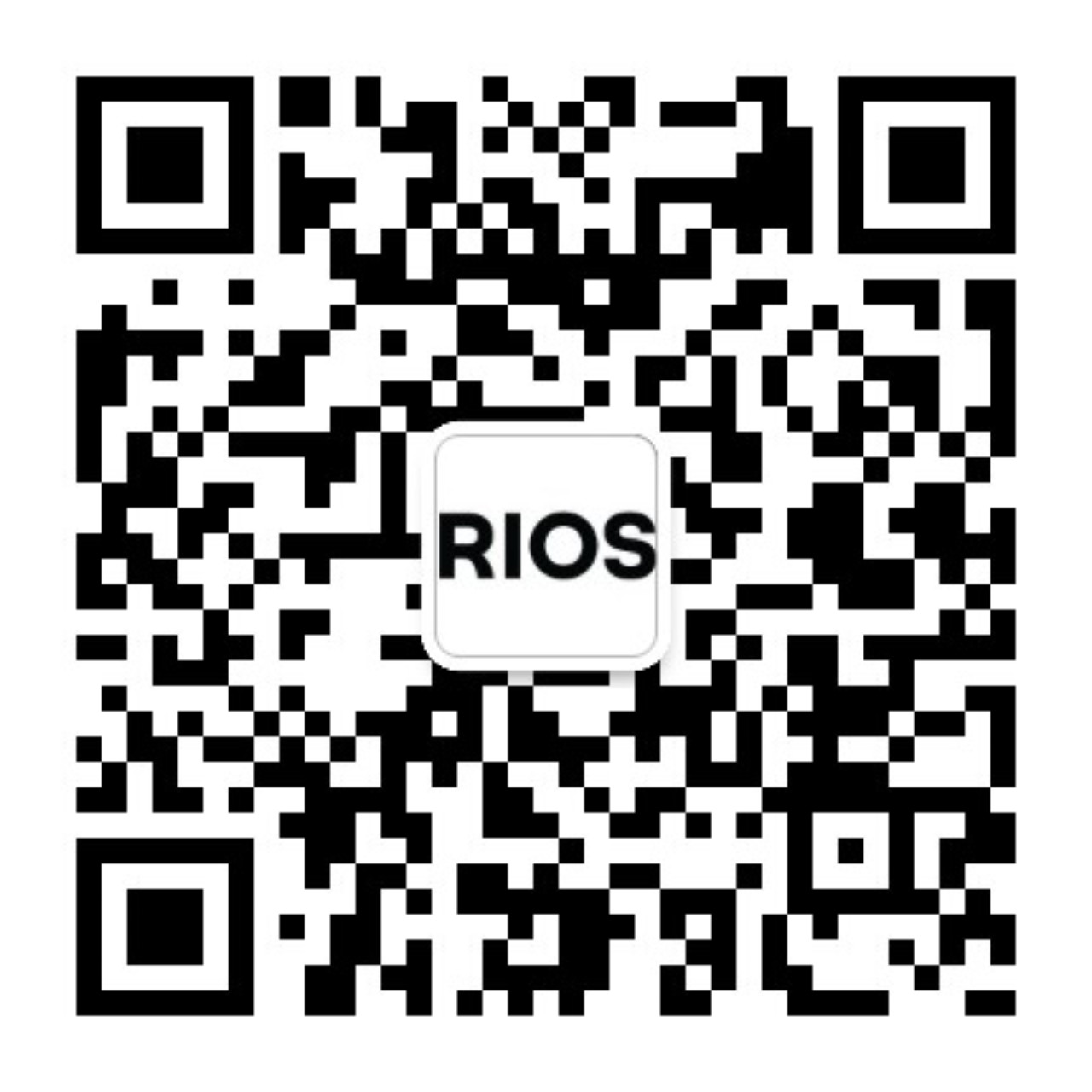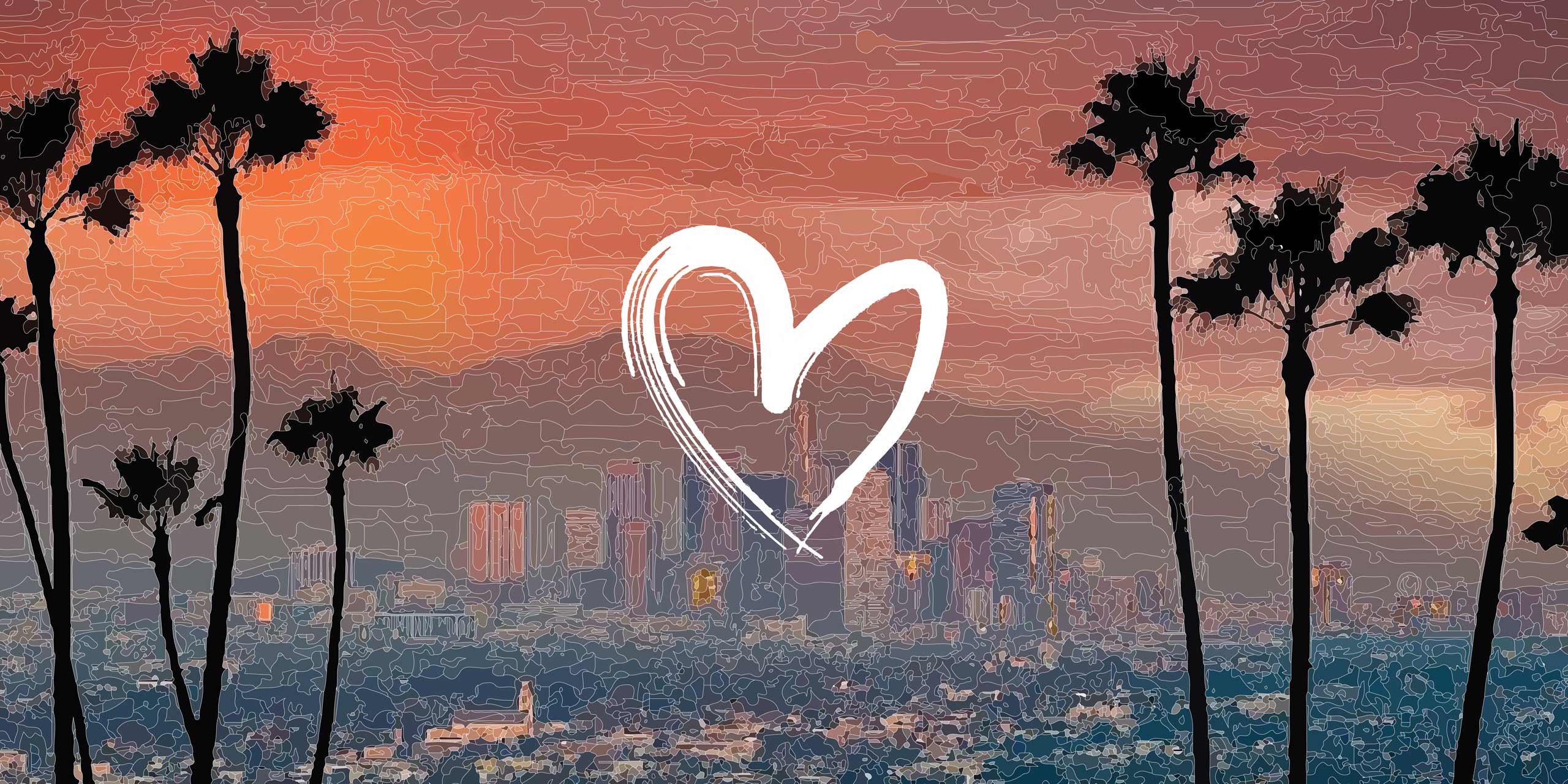
Wildfire Recovery Resources
Our Hearts are with California
The devastation of recent weeks has deeply affected our entire team as we’ve watched colleagues, clients, and loved ones lose their homes to the fires. Even in our collective grief, we’ve witnessed remarkable acts of kindness and generosity: Neighborhoods across our city coming together, offering helping hands and open hearts as we begin the difficult journey of rebuilding together.
On this page, we’ve compiled resources and expert guidance to better help our community with design and construction related questions. Please contact us with questions or to add to our resources.
Disclaimer: All information on this website is considered current at the time of publication and is subject to updates due to the evolving nature of the subject.
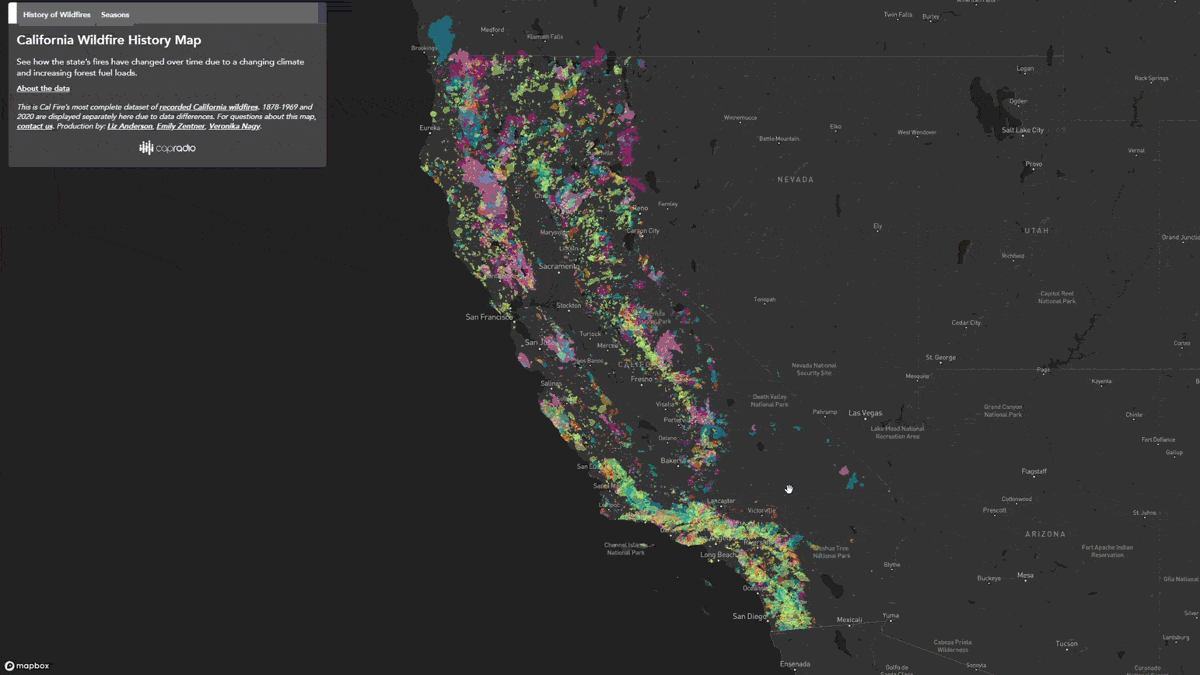
California Wildfire History Map (Map from Cal Fire)
Wildfire Recovery Resources Guide
Click on the topic you are interested in to go to the section directly.
- Immediate Response and Safety
- What can I do now?
- Insurance
- When can I go back?
- How can I clean up?
- Resources and Recovery
- Government and Community Resources
- Insurance
- Mental Health
- How can I help others?
- Rebuild and Repair
- Where do I start?
- What is the process?
- Temporary housing during construction
- Understanding defensible space
- Understanding fire-resistant materials
- Preventative measures for existing homes
- Community Rebuilding
- Wildfire Ecology & Neighborhood Legacy
- Community Planning
- Sense of Home & Together in Hope
- RIOS Resource Hub
Immediate Response and Safety
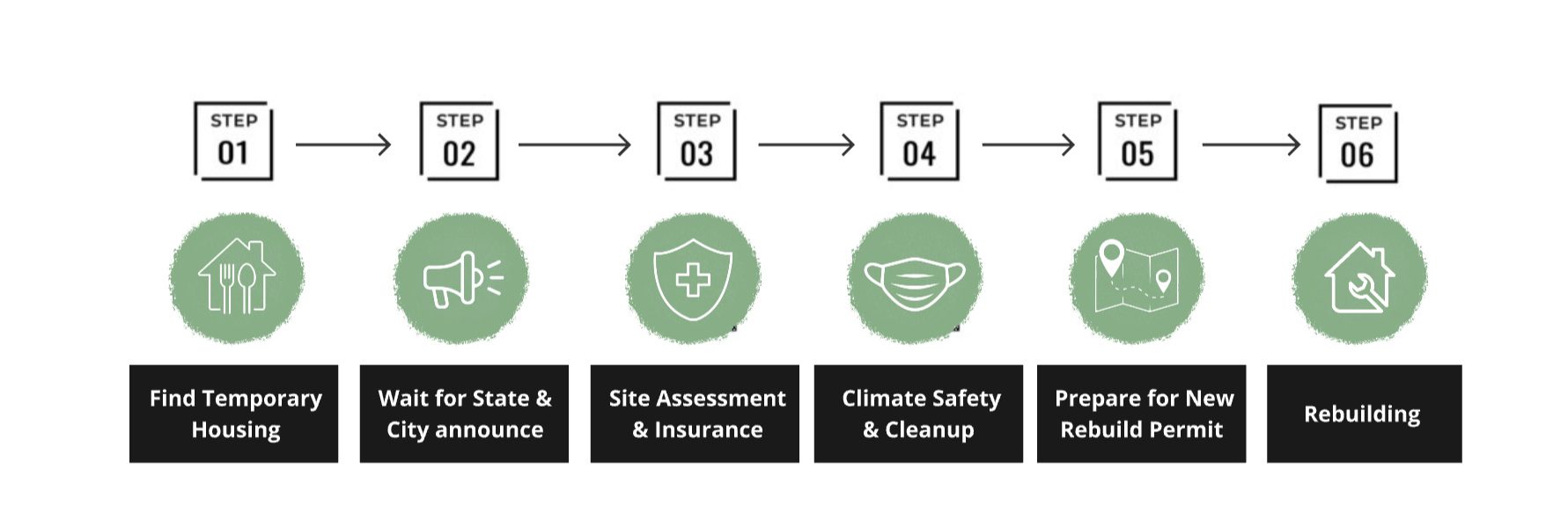
What can I do now?
Check here for government comprehensive response:
Temporary Housing
Medical
Mental Health
When to go back?
Many areas are accessible only with a police escort. Return only when the Fire Department confirms access. Protect yourself against poor air quality, check for structural damage, and confirm that utilities (electricity, gas, and water) are safe or shut off.
Home sites that have burned or are adjacent to burn areas are toxic. Wear breathing protection, disposable gloves, and protect clothing from exposure to dust, disposing of any contaminated items. Refer to LA Sanitation’s current recommendations for precautions to take when returning to properties.
How can I clean up?
After disaster-related structural losses, debris removal occurs before sites are cleared for rebuilding. For large-scale areas like those in LA, state and local agencies coordinate with local jurisdictions on this process across the broader area. If you contract privately for debris removal, you can proceed on your own timeline, but please coordinate with insurers to confirm coverage.
The LA Sanitation Map and CA Gov Clean Up Guide provides information on waste collection, recycling, hazardous waste disposal, and sanitation services in Los Angeles.
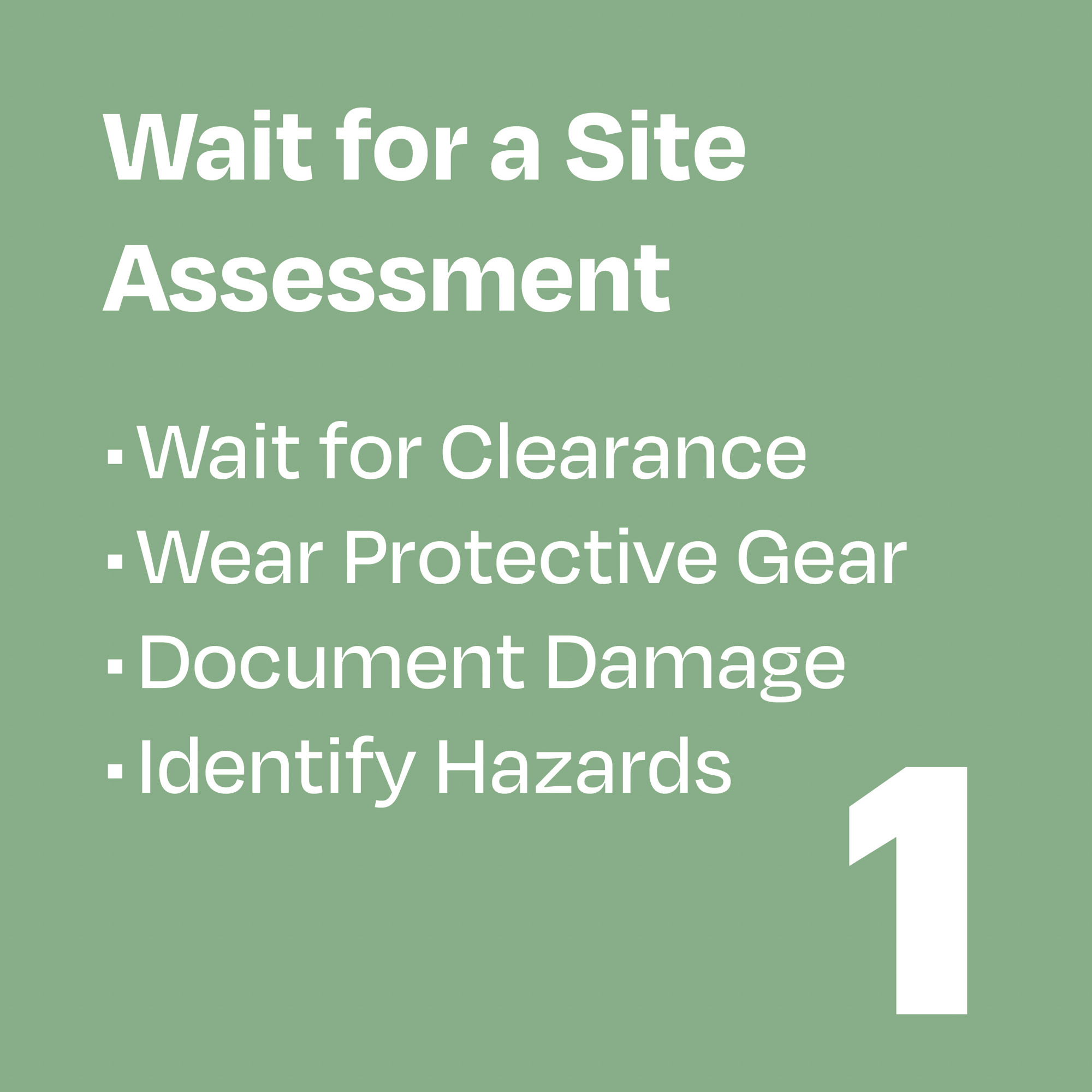
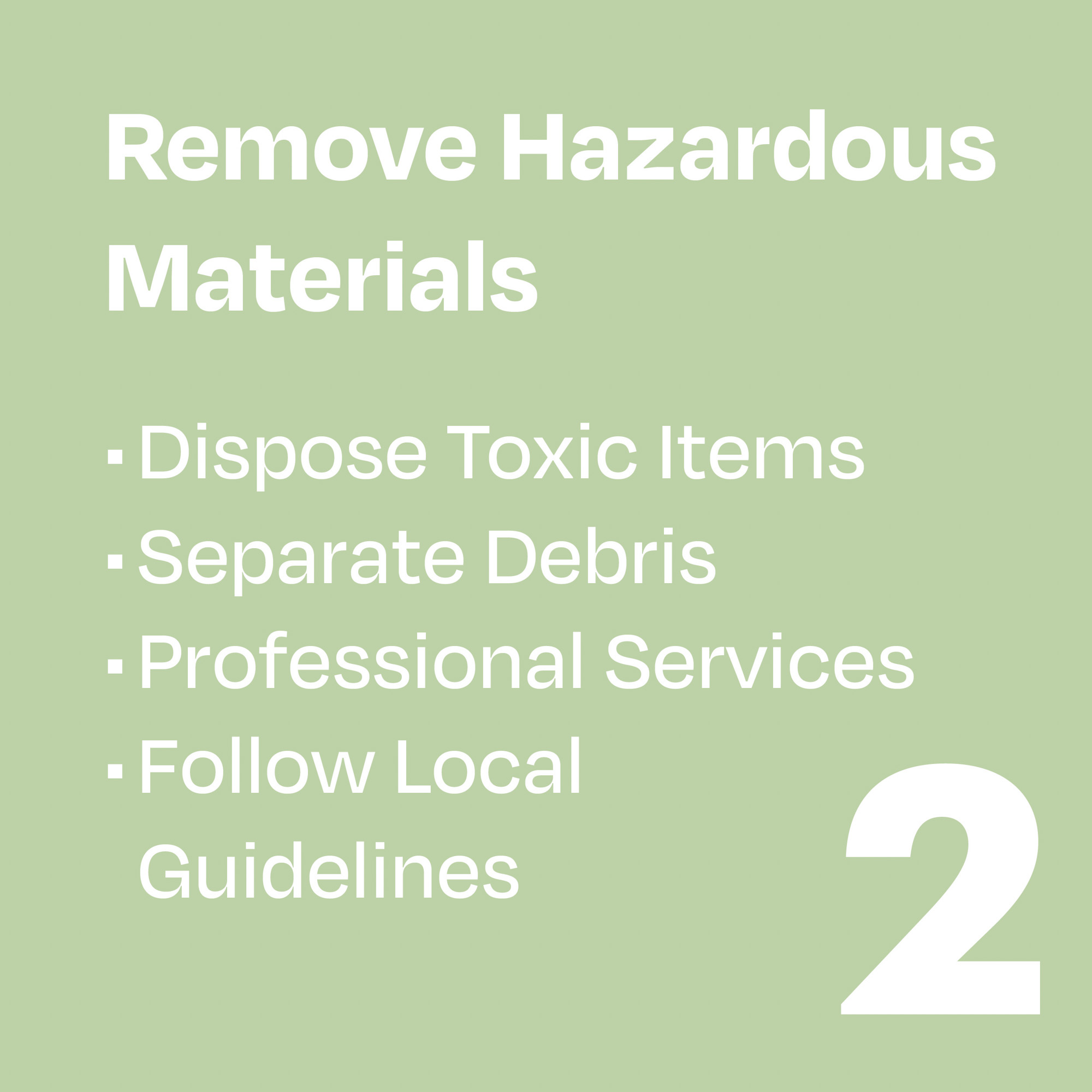
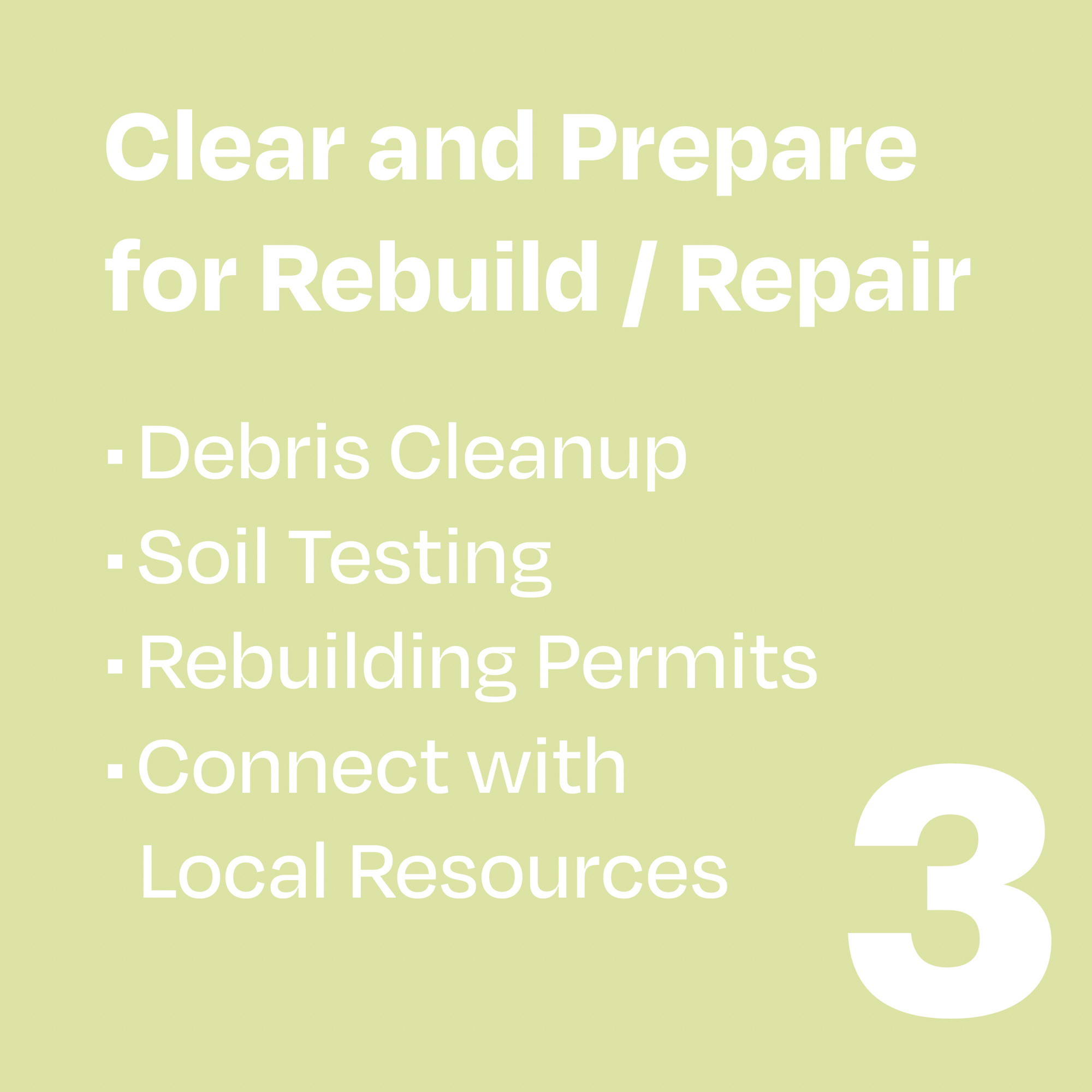
Resources and Recovery
Our goal is to help streamline the recovery process, offering continuous support and making the path to restoration smoother and more accessible for everyone impacted by the wildfire.
Government Resources
Federal Response: FEMA Disaster Recovery Centers now open in Los Angeles County.
CDC Safety: Prepare your home and landscaping to reduce wildfire risk.
LAFD Foundation: Supports LAFD with critical equipment and programs to save lives.
CA Gov: 2025 Los Angeles Fires – resources for wildfire-affected individuals.
Disaster Assistance: Help applying for FEMA aid and connecting to recovery resources
LAPF: Partners to enhance LAPD performance and community relations.
LA City: Ongoing response to the Palisades Fire, which has displaced thousands.
Evacuation Guide: Tips for safe and efficient evacuation during wildfires.
House & Urban: HUD assistance for state and local wildfire recovery efforts.
Community & Donate
LA Recovery: Property owners may qualify for tax relief if their property is damaged or destroyed by fire or flooding.
Cal Fund: Advocates for wildfire survivors through outreach and strategic community investments.
LA Mission: Offers support for wildfire victims—give or receive help with forms available online.
GoFundMe: Emergency relief grants of $1,000 available for wildfire survivors through verified campaigns.
AIA LA: Offers critical resources and information for affected communities during this crisis.
USGBC CA: Supports wildfire recovery with resources focused on rebuilding and sustainability.
LA County Relief Fund: Donate to aid county-wide recovery efforts, focusing on rebuilding and support services.
Pasadena Community Foundation: Supports wildfire relief and recovery with a dedicated donation fund.
LA Works: Volunteer opportunities to assist in rebuilding communities affected by wildfires.
Best Friends Animal Society: Provides emergency rescue for displaced animals impacted by the wildfires.
CA Volunteers: Connects volunteers to efforts supporting wildfire survivors across the state.
Wetlands & Wildfire Care Center: Aiding wildlife recovery for injured animals displaced by the fires.
Insurance
CA Dept. of Insurance: Offers guidance on preparing for and recovering from wildfires, including insurance claim tips and consumer protections.
Insurance Information Institute: Resources for homeowners to protect their property from wildfires and minimize insurance premiums through preventative measures.
NAIC: Offers comprehensive advice on wildfire insurance, including claim steps and home preparation guidance.
Mental Health
CalHOPE: 24/7 peer-run hotline providing free, confidential emotional support to Californians affected by wildfires.
LACDMH: Mental health services for disaster survivors—access resources and support through the LACDMH Disaster Mental Health Program.
Crisis Lifeline: A national hotline for mental health and emotional support—trained counselors available 24/7.
Mental Health Resource: A resource hub offering tips on maintaining emotional well-being, with support for anxiety, stress, and depression during and after wildfires.
Climate Mental Health Network: A coalition focused on mental health resources related to the emotional toll of climate crises, including wildfires.
Rebuild and Repair
Tips to Rebuild and Repair with a Sustainable Defensive Strategy
RIOS is dedicated to supporting homeowners and developers in rebuilding safer, more fire-resilient communities.
Useful Guides:
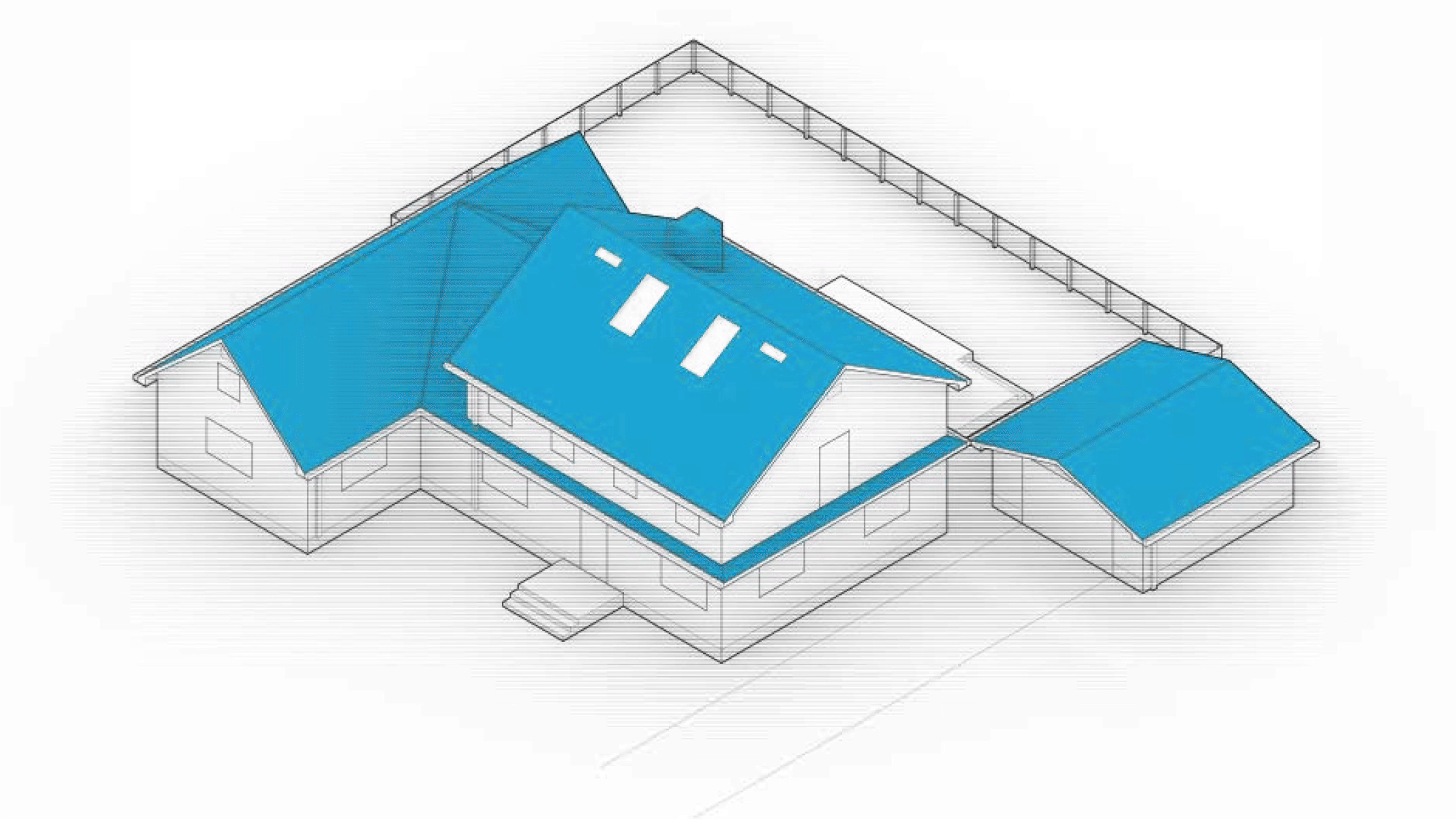
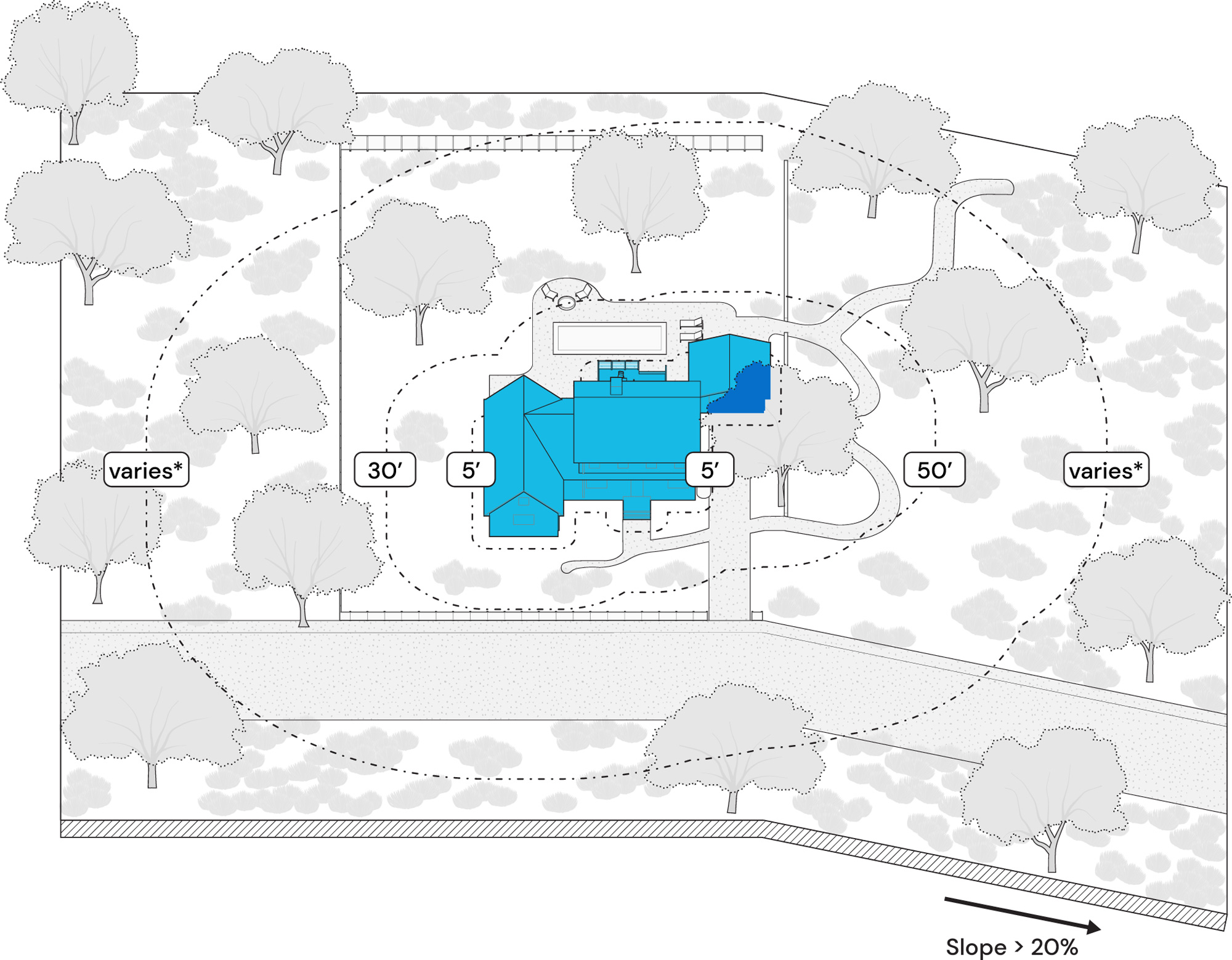
Home and Site Rebuild
Roofs are the most vulnerable components of a home. Complex roofs and overhangs can provide more places for fire embers to lodge.
Utilize non-combustible, fire-resistant materials. Concrete, masonry, steel, fiber-cement, and fire-treated wood are good candidates.
Avoid the adjacency of combustible fences or decks.
Read more about rebuilding.
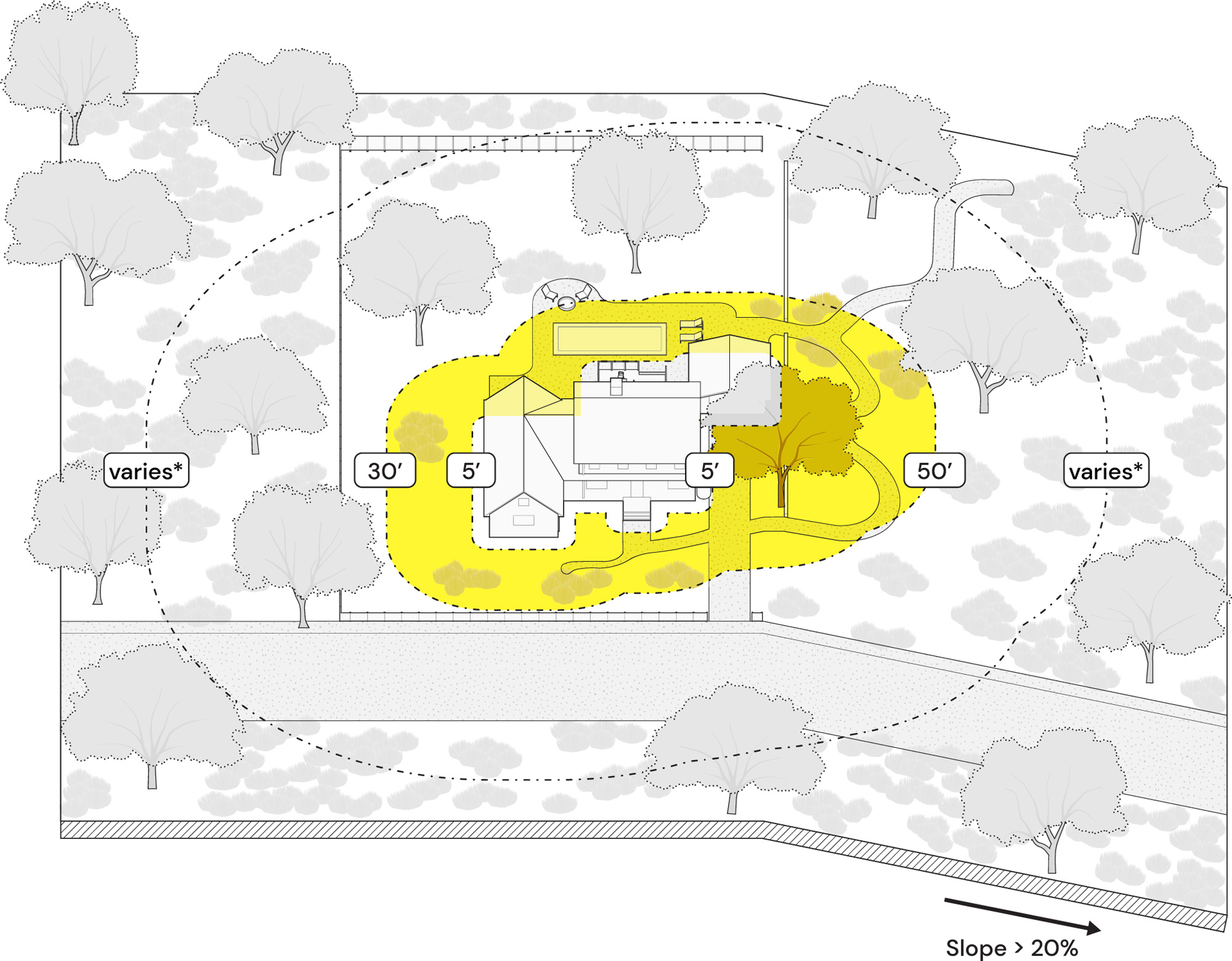
Repairs and Upgrades
Noncombustible exterior cladding with a minimum fire-resistance rating of one hour for the wall assembly is recommended.
The foundations of homes in fire-prone areas should be enclosed to decrease opportunities for wind-blown embers to enter.
Replace your roof with a Class A-rated roof with noncombustible coverings. Replace deep eaves with short overhangs and flat ledges.
Read more about repair.
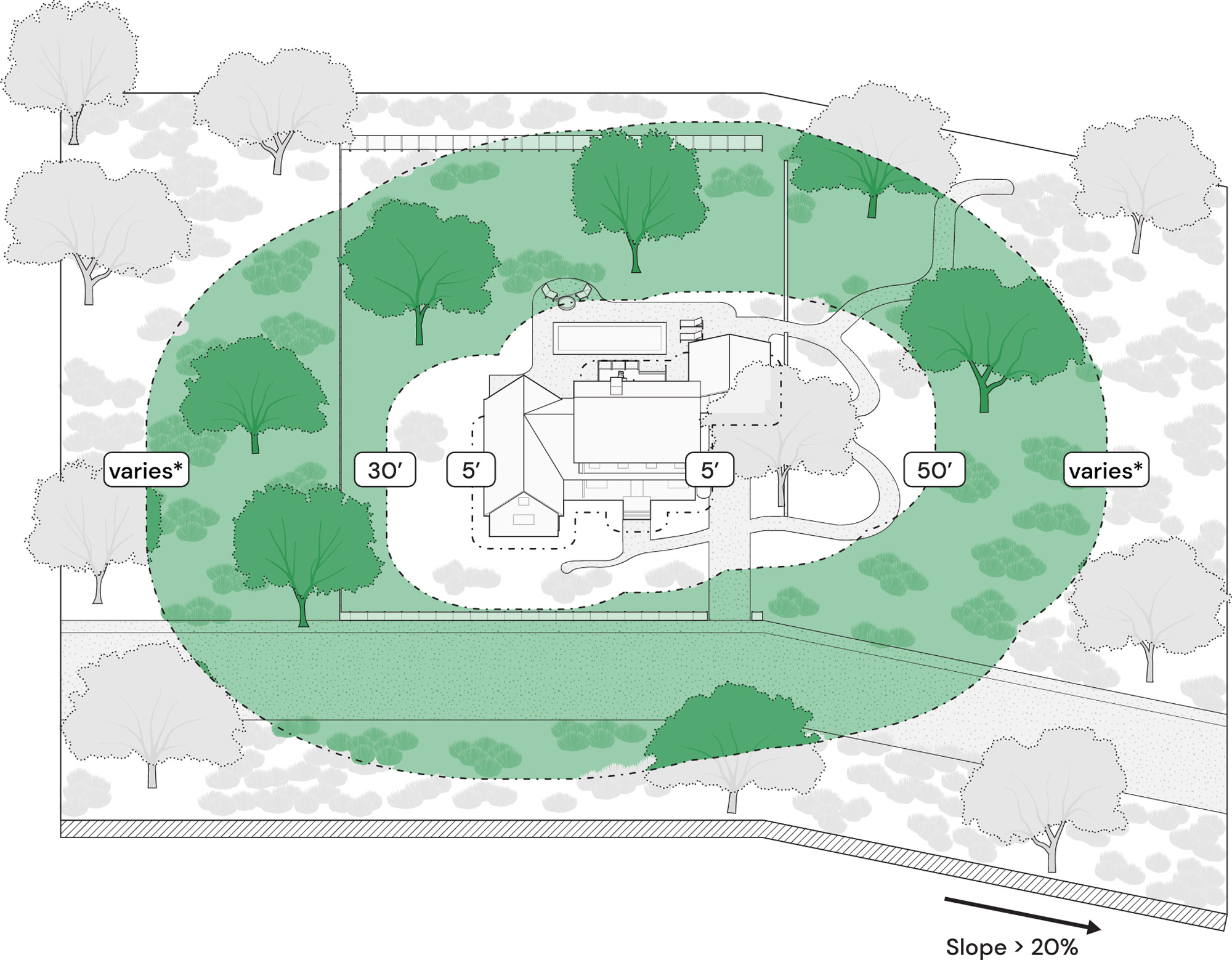
Defensible Space
Implement a fire-wise landscape where plants and hardscapes are selected and maintained so that they do not transmit fire.
Maintain a 5-foot ember-resistant, no-planting zone around your home. Include hardscapes, such as stone paths and walls, that can act as a fuel break between islands of fire-resistant, preferably native vegetation, and help slow down or change the path of an approaching fire.
Read more about defensible space.
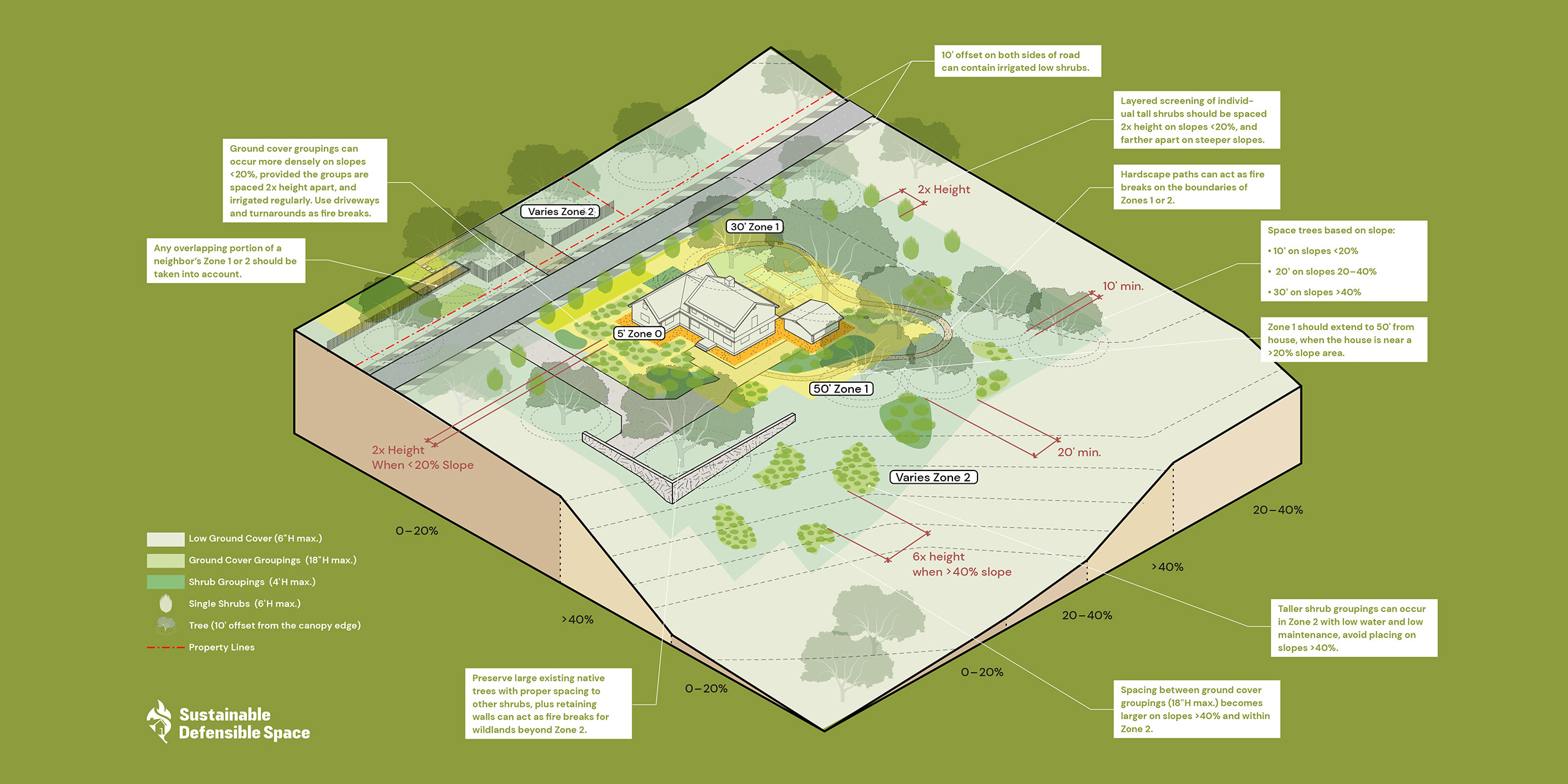
Rebuilding Community
Protecting Wildfire Ecology & Preserving Neighborhood Legacy
A holistic approach emphasizes strategies that protect neighborhoods and regions from wildfires and natural disasters through comprehensive planning and community engagement.
Our intent is to research and inform communities on local wildfire ecologies, helping them understand how to work with nature to protect and strengthen landscapes while safeguarding homes. Through these efforts, we empower residents to proactively manage environmental risks in Southern California’s unique ecosystems.
Our aspirations are to ensure that rebuilding honors the area’s cultural and natural heritage, creating spaces that both protect and celebrate the distinct identity of each community.
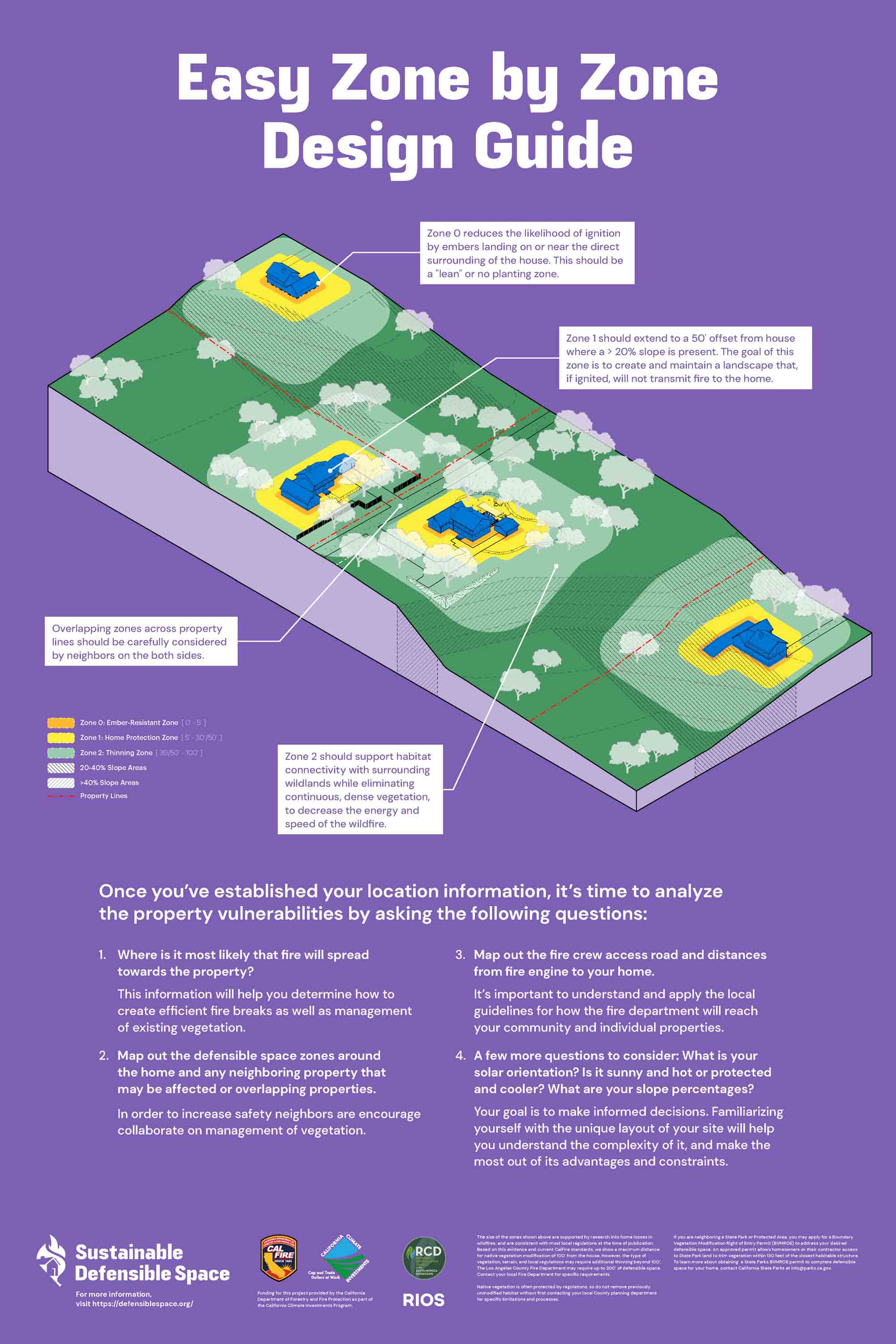
Community Planning is Key to Reducing Vulnerability to Wildfires
RIOS partnered with the Santa Monica Mountains National Recreation Area (SMMNRA) to create the Sustainable Defensible Space platform, offering guidance on improving resilience and resource conservation in vulnerable areas.
Maintaining a sustainable, defensible space boosts wildfire safety at the property level. Since wildfire risk is tied to the most vulnerable properties, neighborhood-wide vegetation management and home hardening are crucial. Community-wide cooperation reduces wildfire risk and benefits local ecosystems when native plants and wildlife are supported.
To learn more, visit DefensibleSpace.org.
Download the Wildland Urban Interface Wildfire Resilience Homeowner Handbook.
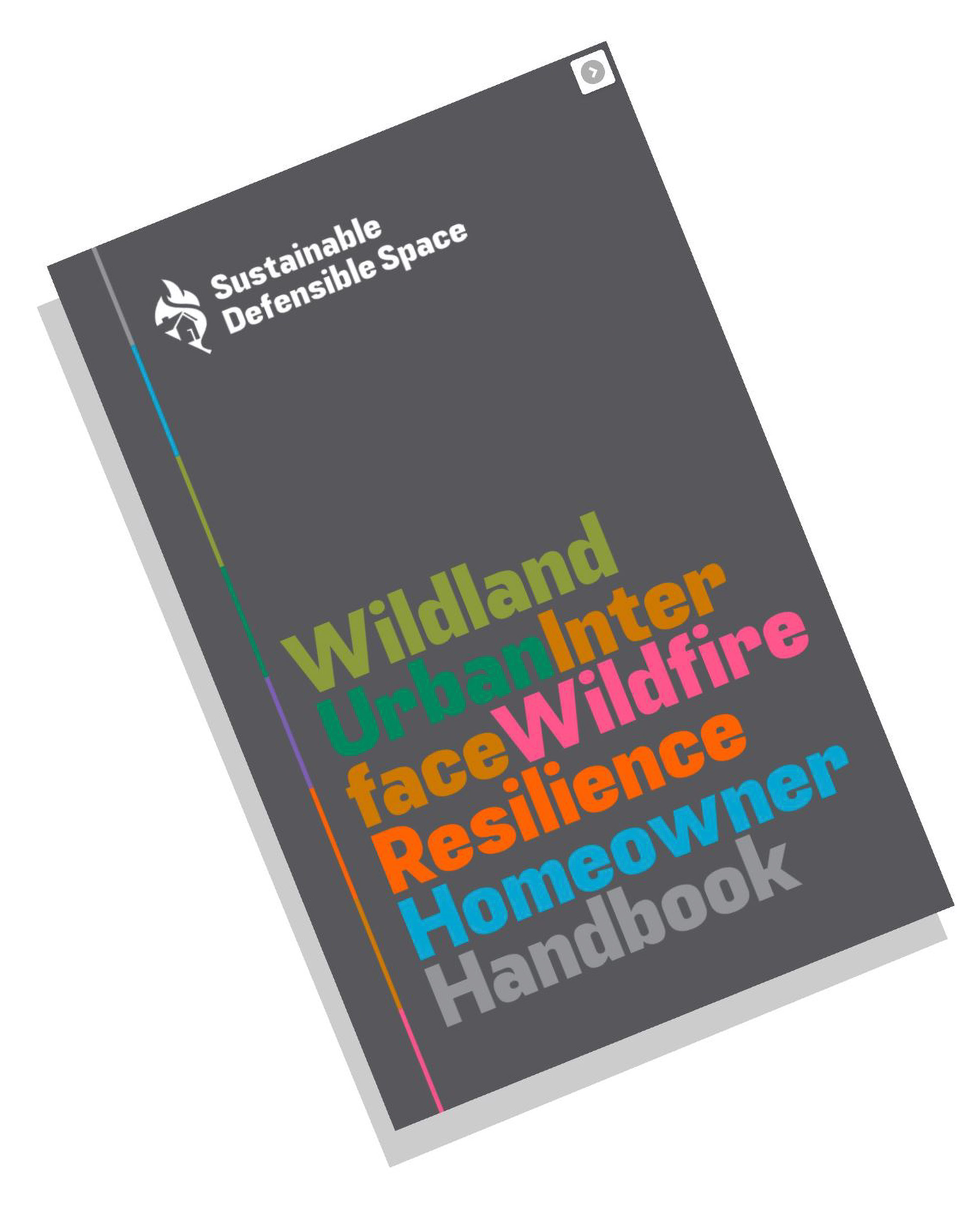
Creating a Sense of Home & Belonging
Rebuilding isn’t just about replacing what’s lost; it’s about recreating the heart of our community. Together, we will:
Design with Heart
Craft homes that embody our community’s resilience, seamlessly blending safety, functionality, and local beauty.
Gather in Shared Spaces
Restore our parks, community centers, and collective gathering places, transforming them into vibrant centers of connection and renewal.
Honor Our Roots
Weave the rich tapestry of our local traditions and natural landscape into every aspect of our rebuilding, ensuring our community’s spirit remains unbroken and vibrant.
Together in Hope & Recovery
Rebuilding isn’t just about replacing what’s lost; it’s about reimagining and reclaiming places that feel like home again. Together, we will:
Support Each Other Every Step of the Way
Create targeted support programs and resources that actively connect neighbors, transforming individual resilience into collective strength.
Build Connections That Last
Cultivate deep, meaningful trust through intentional support networks and community-driven initiatives that transcend temporary challenges.
Look to the Future with Hope
Remain united in our commitment to rebuild—not just structures, but the intricate social fabric that defines our shared community, knowing that our collective journey will forge an even deeper connection.
RIOS Resource Hub
Welcome to the Community Resource Hub, a live table designed to connect individuals, organizations, and communities with vital support during challenging times. Here, you can:
- Submit resource links, aid opportunities, and funding initiatives to help others.
- Access a growing list of tools, services, and information shared by the community.
Please visit the RIOS Resource Hub to explore what’s available or add your resource here. Let’s make a difference!

